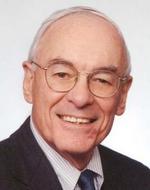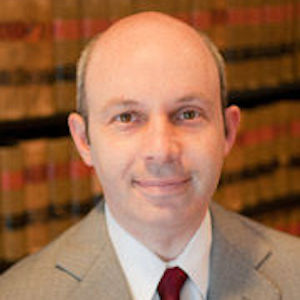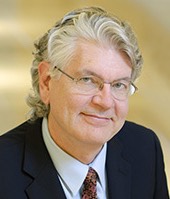 On February 29, 2016, ParkerVision, Inc. filed a petition for a writ of certiorari with the United States Supreme Court questioning whether an inconsistency in expert testimony permits a court to set aside a jury verdict and grant the losing party judgment as a matter of law. We along with several other attorneys represent ParkerVision, the plaintiff, which secured a $173 million infringement verdict that the courts subsequently threw out based on their own assessment of the evidence.
On February 29, 2016, ParkerVision, Inc. filed a petition for a writ of certiorari with the United States Supreme Court questioning whether an inconsistency in expert testimony permits a court to set aside a jury verdict and grant the losing party judgment as a matter of law. We along with several other attorneys represent ParkerVision, the plaintiff, which secured a $173 million infringement verdict that the courts subsequently threw out based on their own assessment of the evidence.
This case raises fundamental questions about the jury’s role in patent trials. All patent owners should seriously consider filing an amicus brief in support of this petition for certiorari.
Background
ParkerVision holds a patent for technology that converts a high-frequency electromagnetic signal into a low-frequency signal called the “baseband.” ParkerVision’s technology comprises a switch and a capacitor. The signal flows into the switch and then to the capacitor, and then out to the circuit. Both the switch and capacitor play a role in converting the input signal to the baseband. Qualcomm makes products that convert high-frequency signals to the baseband using a switch and a capacitor.
ParkerVision’s lawsuit alleges that Qualcomm’s products infringe its patents. At trial, ParkerVision presented the only expert witness on the question of infringement, Dr. Paul Prucnal, who testified that Qualcomm’s products infringe. On cross-examination, Dr. Prucnal also stated, however, that the output of the switch is the baseband signal, a statement that is arguably inconsistent with his testimony that both the switch and the capacitor play a role in generating the baseband. On redirect, Dr. Prucnal reiterated that both the switch and capacitor together generate the baseband.
The eight-person jury was highly educated. It included an engineer with a master’s degree in electrical engineering, a computer scientist, a commercial litigator, a college nursing instructor, and a teacher. The jury was properly instructed, and after significant deliberation it found that Qualcomm had infringed ParkerVision’s patents and awarded approximately $173 million to ParkerVision.
The district court, however, determined that Dr. Prucnal’s testimony was internally inconsistent and therefore failed to prove infringement. The court threw out the verdict and granted Qualcomm judgment as a matter of law. The Federal Circuit affirmed, essentially conducting its own assessment of the testimony and determining that it did not support a finding of infringement. It is telling that the Federal Circuit did not cite any authority in the analysis affirming the district court’s decision to throw out the jury verdict; instead, it only offered its own views about the strength of Dr. Prucnal’s testimony.
ParkerVision moved for rehearing, arguing that the fact-finder, and not the court, has the right to resolve inconsistencies in testimony. The Federal Circuit stood by its earlier opinion. The court admitted that generally, judges cannot second-guess juries, but held that “[w]hen the party with the burden of proof rests its case on a witness’s unexplained self-contradictory testimony, the court, in appropriate cases, may conclude that the evidence is insufficient” to support a verdict. It determined that “this is such a case” because Dr. Prucnal’s testimony was inconsistent, and “ParkerVision made no attempt to reconcile the two conflicting strands of its expert’s testimony.” The court also determined that Dr. Prucnal’s direct and redirect testimony was “vague,” but his testimony on cross-examination was “unequivocal.” Thus, it reweighed the evidence of infringement and again found it wanting.
On February 29, ParkerVision filed a petition seeking the Supreme Court’s review of that decision. The petition argues that the Federal Circuit’s holding conflicts with those of other courts of appeals, and pays short shrift to the Seventh Amendment, which provides a right to a jury trial, and protects jury verdicts from unduly intrusive appellate review.
Why An Amicus Brief Is Warranted
In this case, the roles of courts and juries are front and center. The Federal Circuit has been dismissive of jury findings. As Judge Newman has observed, the Federal Circuit frequently “reweigh[s] the evidence to reach [the court’s] preferred result, rather than considering whether substantial evidence as presented at the trial supports the verdict that was reached by the jury.”[1] Other judges and scholars have concurred in this view.[2]
This case presents an ideal opportunity to reverse this trend. If certiorari is granted, it is highly likely that the decision below will be reversed. As the Supreme Court has explained, when, as here, “there is an evidentiary basis for the jury verdict, the jury is free to discard or disbelieve whatever facts are inconsistent with its conclusion.” Lavender v. Kurn, 327 U.S. 645, 652 (1946). “[T]he appellate court’s function is exhausted when that evidentiary basis becomes apparent, it being immaterial that the court might draw a contrary inference or feel that another conclusion is more reasonable.” Id.
Certiorari will only be granted, however, if the Court is convinced that this case stands for more than the narrow interests of the parties involved. We believe that the case implicates a circuit split because other courts have recognized that even when a witness testifies inconsistently, an appellate court cannot second-guess the jury’s resolution of that inconsistency.[3] But the Federal Circuit clouded the split in response to ParkerVision’s petition for rehearing by paying lip service to these principles even as it defied them.
That is why amicus participation is particularly important in this case. Amicus briefs are a trusted proxy for the importance of an issue. Participation by multiple amicus filers would send a strong signal, and provide filers an opportunity to make an original and impactful contribution to the cause of the civil jury.
As noted above, the petition was filed on February 29. The Court has not yet called for a response, but we expect that it will do so sometime during the month of March. Amicus briefs will be due thirty days from that date, so most likely in mid to late April.
_______________
[1] PharmaStem Therapeutics, Inc. v. ViaCell, Inc., 491 F.3d 1342, 1381 (Fed. Cir. 2007) (Newman, J., dissenting); see also Med. Instrum. & Diagnostics Corp. v. Elekta AB, 344 F.3d 1205, 1225 (Fed. Cir. 2003) (Newman, J., dissenting); Malta v. Shulmerich Carillons, Inc., 952 F.2d 1320, 1331 (Fed. Cir. 1991) (Newman, J., dissenting).
[2] See, e.g., I/P Engine, Inc. v. AOL Inc., 576 Fed. Appx. 982, 996 (Fed. Cir. 2014) (Chen, J., dissenting); Becton, Dickinson & Co. v. Tyco Healthcare Grp., LP, 616 F.3d 1249, 1266 (Fed. Cir. 2010) (Gajarsa, J., dissenting); William C. Rooklidge & Matthew F. Weil, Judicial Hyperactivity: The Federal Circuit’s Discomfort with its Appellate Role, 15 Berkeley Tech. L.J. 725, 739-40 (2000); Ted D. Lee and Michelle Evans, The Charade: Trying a Patent Case to All “Three” Juries, 8 Tex. Intell. Prop. L.J. 1, 14 (1999); Gregory D. Leibold, In Juries We Do Not Trust: Appellate Review of Patent-Infringement Litigation, 67 U. Colo. L. Rev. 623, 625-26 (1996); Arti K. Rai, Engaging Facts and Policy: A Multi-Institutional Approach to Patent System Reform, 103 Colum. L. Rev. 1035, 1056 (2003).
[3] See, e.g., Zellner v. Summerlin, 494 F.3d 344, 371 (2d Cir. 2007) (“[T]he jury is free to believe part and disbelieve part of any witness’s testimony.”); Poertner v. Swearingen, 695 F.2d 435, 437 (10th Cir. 1982) (holding that “inconsistency within the testimony of [the plaintiff’s] expert witness is an issue of credibility for the jury to resolve”); Payton v. Abbott Labs, 780 F.2d 147 (1st Cir. 1985) (“The expert testimony in this case was certainly not free of ambiguity and uncertainty. But it is a matter for the jury to resolve any inconsistencies in expert testimony.”); Contractor Util. Sales Co. v. Certain-Teed Corp., 748 F.2d 1151, 1155 (7th Cir. 1984) (“Issues as to inconsistencies, conflicts, and credibility are for resolution by the jury.”); Teti v. Firestone Tire & Rubber Co., 392 F.2d 294, 298 (6th Cir. 1968) (“[A] trial judge, in considering a motion for a directed verdict, must not usurp the function of a jury and determine the credibility of a witness or weigh the relative merits of a party’s claim.”); Chicago Great Western Ry. v. Smith, 228 F.2d 180, 183 (8th Cir. 1955).

![[IPWatchdog Logo]](https://ipwatchdog.com/wp-content/themes/IPWatchdog%20-%202023/assets/images/temp/logo-small@2x.png)



![[Advertisement]](https://ipwatchdog.com/wp-content/uploads/2024/04/Patent-Litigation-Masters-2024-sidebar-early-bird-ends-Apr-21-last-chance-700x500-1.jpg)

![[Advertisement]](https://ipwatchdog.com/wp-content/uploads/2021/12/WEBINAR-336-x-280-px.png)
![[Advertisement]](https://ipwatchdog.com/wp-content/uploads/2021/12/2021-Patent-Practice-on-Demand-recorded-Feb-2021-336-x-280.jpg)
![[Advertisement]](https://ipwatchdog.com/wp-content/uploads/2021/12/Ad-4-The-Invent-Patent-System™.png)







Join the Discussion
13 comments so far.
Edward Heller
March 28, 2016 05:33 pmGene@12, well the Federal Circuit did rule in MCM v. HP that “validity” was an regulatory function having no 7th Amendment right. I am not sure the Supreme Court is going to take a case that “assumes” that a right to trial by jury for validity exist. They are waiting, I think, for a case that directly raises the issue.
We will raise that issue in our petition that is currently scheduled to be filed by April 29.
Gene Quinn
March 28, 2016 04:48 pmEd-
Just saw that in the daily orders. Whether the Supreme Court is prepared to take the case or not, the Federal Circuit does have a growing and concerning tendency of giving little respect to victorious patent owners who have received large jury verdicts.
-Gene
ed warren
March 28, 2016 03:56 pmSupreme court rejected the cert request without further comment in 28 Mar 2016 orders
Night Writer
March 15, 2016 07:08 pmGood point @9. 🙂
Edward Heller
March 10, 2016 06:32 pmIt is almost as if we lived in Alice’s Wonderland. Hasn’t Dunner heard? Patents are public rights. There is no right to jury trial for patent validity. Thus any jury verdict in court can only be advisory, there being no 7th Amendment right.
step back
March 10, 2016 08:16 amLooking yet more closely at the CAFC’s understanding of basic electronics, they write at pages 11-12:
” In other words, the accused products do not require an electric current
from the carrier signal to go in and out of the storage capacitors in order to create the baseband signal; instead, the baseband current is created by the double-balanced mixer before the current reaches the capacitors.”
Huh?
At least they spelled Kirchhoff correctly.
step back
March 10, 2016 07:59 amFrom my perspective, it sounds like the district judge doesn’t understand basic electronics and thus can speak in vague terms of signals being created because capacitors store “energy” and wondering whether different points along a wire are one and the same.
Sounds like the CAFC judges are equally clueless.
Off course, one needs to see the actual schematics before determining what went on here. Is the capacitor on the same line as the output of the mixer?
step back
March 10, 2016 07:54 amFirst things first.
Folk here should read the opinion before jumping to ivory tower conclusions.
http://www.cafc.uscourts.gov/sites/default/files/opinions-orders/14-1612.Opinion.7-27-2015.1.PDF
Night Writer
March 10, 2016 07:38 am@4 Ken: I agree. I think there is no doubt judges in patent cases do this way too frequently. But, I think the point of law to the SCOTUS raised here was regarding the Fed. Cir.
Ken
March 10, 2016 07:35 am“…all the Fed. Cir. did was affirm a lower court throwing out a jury verdict.”
I see this point, but maybe the real issue isn’t so much “appellate” overreach with respect to District Court judges/juries, but rather ANY courts overreaching with respect to juries.
If an accused infringer has a defense regarding a “question of law” (e.g. patent validity/scope) make that case to a judge(s). But juries get to decide questions of fact, and mere disagreement with a jury isn’t supposed to be enough to overrule them.
(I do wonder how much this phenomenon is specific to patent law – it would seem that any civil area of law could potentially have this issue.)
Night Writer
March 10, 2016 12:08 am>The Federal Circuit overturning jury verdicts is a very real and growing concern.
Maybe I read this too fast, but it seemed all the Fed. Cir. did was affirm a lower court throwing out a jury verdict. None of the cases come to mind, but it seems to me over the last year that several times the Fed. Cir. threw out jury verdicts on their own findings of fact without just affirming a district judge.
Maybe these would be better cases for the SCOTUS.
Gene Quinn
March 9, 2016 10:11 pmRobert-
The Federal Circuit overturning jury verdicts is a very real and growing concern. For better or for worse our system is set up such that an appeals court is not supposed to overturn jury verdicts except in extraordinary circumstances. It seems fairly routine for the Federal Circuit to overturn juries though. Ignoring this problem as if it does not exist is not particularly helpful.
As for the claims, obviously some of the claims remain in the case. So I guess even an overtaxed USPTO managed to issue patent claims that both the district court and the Federal Circuit agreed were new and non-obvious.
-Gene
Robert W. Syputa
March 9, 2016 08:24 pmThe Florida District Court, Judge Dalton’s ruling was properly and clearly confirmed by CAFC because of lack of evidence to support the contradictory testimony of Parkervision’s expert witness. Patent cases have clear rules of evidence that Parkervision had failed to meet after repeated attempts to rehabilitate the theory for infringement.
Parkervision’s pursuit of this litigation shows the ease with which patents have been granted by the overtaxed USPTO. “Patent mill” law firms have furthered the ability to sneak obnoxiously broad, vaguely defined claims through the system. It was good to see the bulk of PV’s patents struck down in this case, confirming, despite the obfuscation attempted by Parker’s attorneys, that the system does eventually rule correctly.
It is highly improbable that SCOTIS will